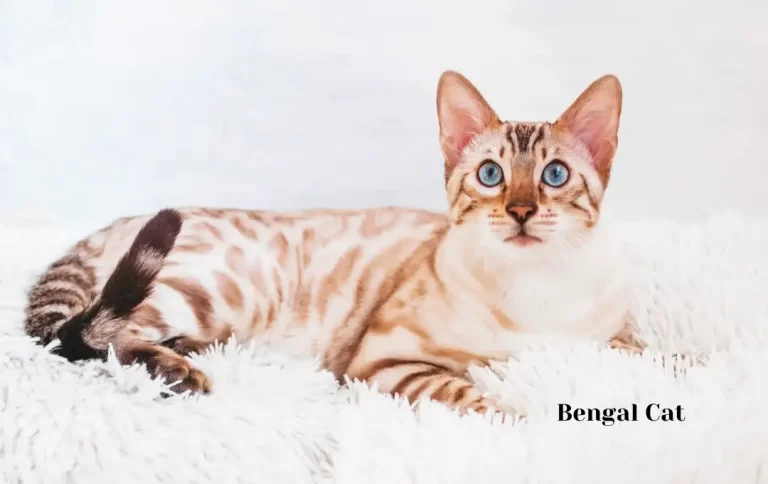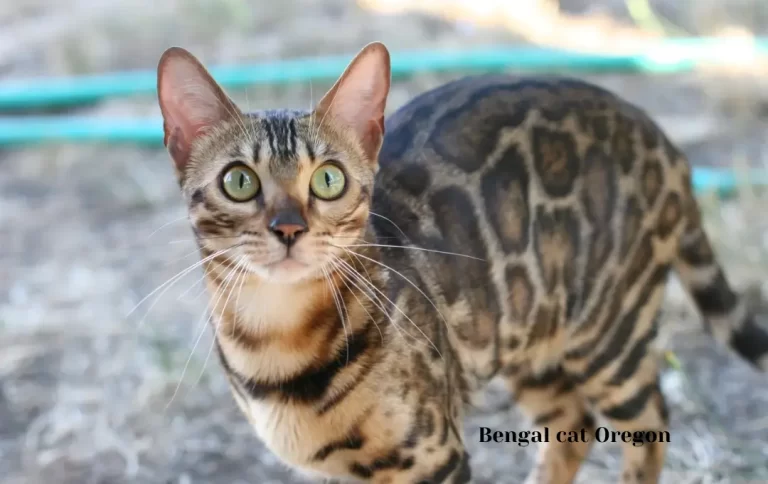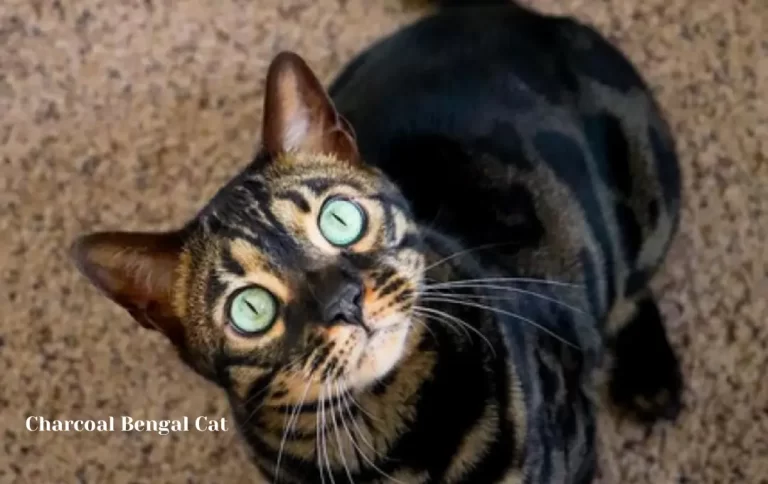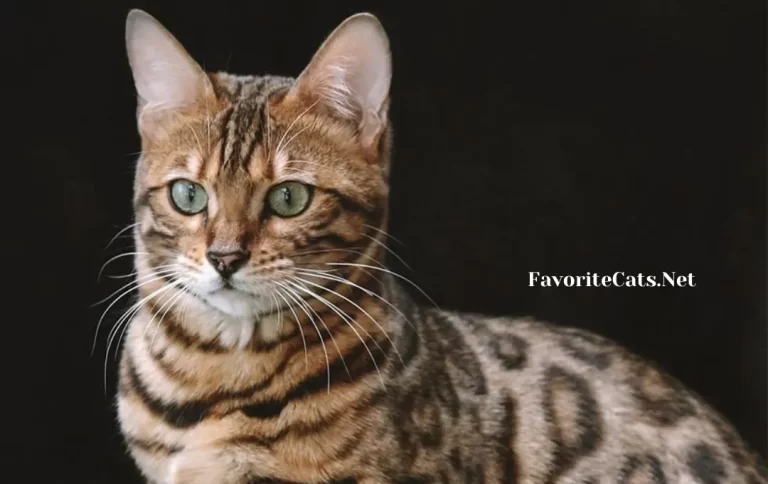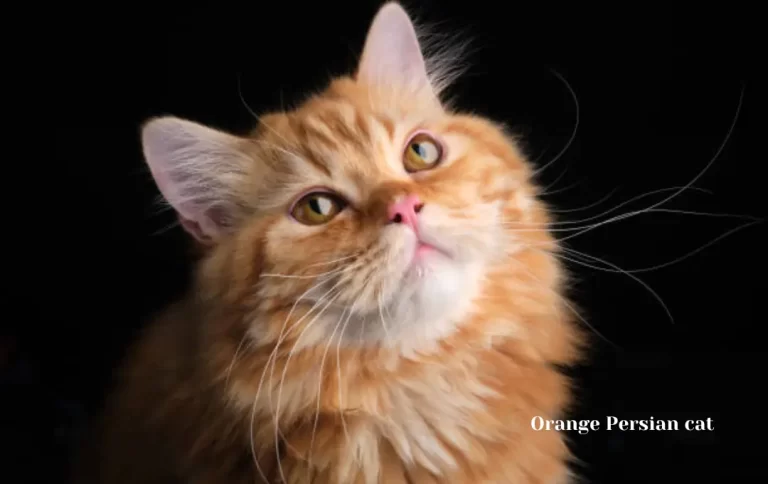Economical Bengal Tabby Cat Price | Bengal – Price, Personality, Lifespan 2023
In the world of feline companions, the Bengal Tabby cat stands out as a mesmerizing and captivating breed. With its exotic appearance reminiscent of a wild leopard and its playful, affectionate nature, it’s no wonder that Bengal Tabby cats have become highly sought after by cat enthusiasts. However, before you embark on the journey of welcoming one of these majestic creatures into your home, it’s crucial to have a comprehensive understanding of Bengal Tabby cat prices.
This extensive guide is designed to be your ultimate resource for navigating the intriguing world of Bengal Tabby cat price.
What is a Bengal Tabby Cat?
Before we delve into the intricate world of Bengal Tabby cat prices, let’s first understand what makes this breed so special.
Origins of the Bengal Tabby Cat
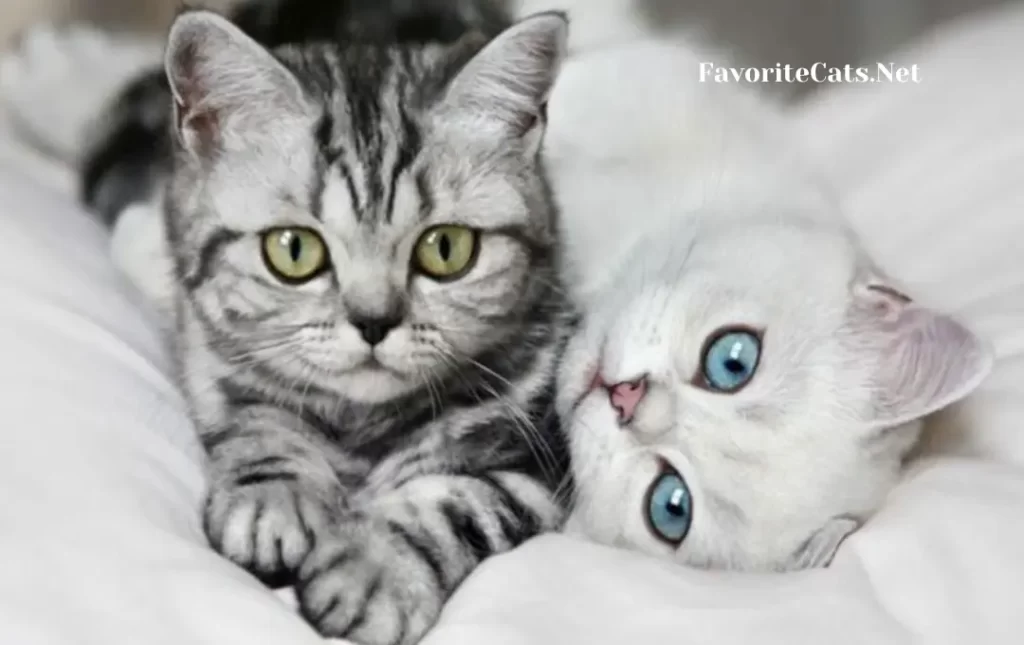
The Bengal Tabby cat is the result of a unique and fascinating breeding program that began in the 1960s. The breed’s origins can be traced back to the work of Dr. Willard Centerwall, who aimed to create a domestic cat with the striking appearance of a leopard. To achieve this, he crossed Asian leopard cats with domestic cats, initially using the Egyptian Mau, Abyssinian, and American Shorthair breeds.
Distinctive Appearance
The Bengal Tabby cat’s most notable feature is its striking coat. It typically displays bold and exotic patterns that can include spots, marbling, or rosettes. The coat colors of Bengal Tabby cats vary widely, with shades ranging from golden, brown, and orange to silver and charcoal. The contrast between their coat’s background color and the pattern creates an eye-catching, wild-like appearance.
Physical Characteristics
Apart from their unique coat, Bengal Tabby cats have distinctive physical features. They have muscular bodies, medium to large in size, and are known for their agility and athleticism. Their heads are slightly small in proportion to their bodies, adorned with expressive, almond-shaped eyes that can range from green to gold, adding to their exotic allure. Bengal Tabby cats also have a distinctive “mascara” lining around their eyes, giving them a mysterious and captivating look.
Temperament and Personality
Beyond their stunning looks, Bengal Tabby cats are beloved for their engaging personalities. They are known for being highly active, curious, and playful. These cats thrive on interaction and are often described as being dog-like in their devotion to their owners. While they may have a wild appearance, Bengal Tabby cats are typically affectionate and enjoy being part of a family. Their energy levels can be high, so providing them with mental and physical stimulation is crucial to their well-being.
Bengal Tabby Cat History – A Brief Look at the Breed’s Origins
To truly appreciate the Bengal Tabby cat and understand its significance, we must journey back in time to explore the fascinating history of this remarkable breed.
The Visionary Beginnings
The story of the Bengal Tabby cat starts in the 1960s with a visionary geneticist, Dr. Willard Centerwall. Dr. Centerwall’s goal was to create a domestic cat breed that would possess the exquisite appearance of a wild leopard while maintaining the endearing temperament of a house cat. This ambitious endeavor laid the foundation for the Bengal Tabby we know today.
The Foundation Cats
Dr. Centerwall began his experiment by crossing Asian leopard cats (Prionailurus bengalensis), which are small wild cats found in Asia, with domestic cats. The early crosses used breeds like the Egyptian Mau, Abyssinian, and American Shorthair. These initial pairings aimed to introduce the distinctive spotted and marbled coat patterns and the leopard-like appearance into the domestic cat gene pool.
Jean Mill’s Contribution
The Bengal Tabby cat’s journey continued with the involvement of Jean Mill, a California-based breeder. Jean took an interest in Dr. Centerwall’s work and decided to further develop the breed. She introduced the stunning marbled pattern, which added a new dimension to the Bengal Tabby’s striking appearance. It’s largely thanks to her efforts that the Bengal Tabby cat we know today was established.
Recognition as a Breed
In the 1980s, the Bengal Tabby cat was officially recognized as a breed by The International Cat Association (TICA). This recognition marked a significant milestone in the breed’s history, as it acknowledged the Bengal Tabby cat’s unique and distinct characteristics.
Conservation Efforts:
Interestingly, the breeding program that led to the Bengal Tabby cat also contributed to the conservation of Asian leopard cats. Creating a domestic breed that shared genetic traits with its wild counterparts, helped raise awareness about the plight of these endangered creatures in the wild.
Continued Development
Since achieving breed recognition, Bengal Tabby cat enthusiasts and breeders have continued to refine and develop the breed. They’ve worked on enhancing coat patterns, and colors, and maintaining the breed’s health and temperament. Today, Bengal Tabby cats are not only captivating pets but also ambassadors for the conservation of their wild relatives.
Bengal Tabby Cat Types – Exploring the Different Bengal Tabby Patterns
One of the most enchanting aspects of Bengal Tabby cats is their extraordinary coat patterns. These distinctive patterns are a result of the breed’s wild ancestry and the careful breeding efforts that have gone into creating these stunning felines. In this chapter, we’ll delve into the different Bengal Tabby cat patterns and the unique characteristics that define each type.
Spotted Bengal Tabby Cats
Spotted Bengal Tabby cats are perhaps the most iconic of the breed. Their coats are adorned with bold, well-defined spots that closely resemble those of their wild ancestors, the Asian leopard cats. These spots can vary in size, shape, and spacing, giving each cat a unique appearance. Spotted Bengals often have a wild and exotic look, which adds to their appeal.
Marbled Bengal Tabby Cats
Marbled Bengal Tabby cats have a strikingly different coat pattern compared to their spotted counterparts. Instead of spots, marbled Bengals feature intricate, flowing patterns that resemble the swirls and streaks seen on marble. The marbling can be broad or fine, and it often covers the entire body, creating a mesmerizing and almost hypnotic appearance.
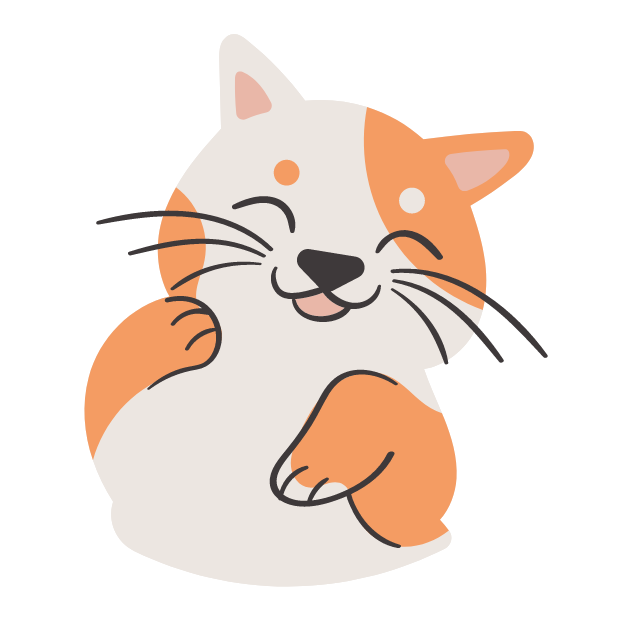
Are Bengals high maintenance?
Bengals can be considered high-maintenance pets because they need tons of mental stimulation and exercise. Ultimately, they’re very energetic, so pet parents must find a way to channel that energy so that it doesn’t become destructive.
Rosetted Bengal Tabby Cats
Rosetted Bengal Tabby cats are highly coveted for their exceptionally eye-catching coat patterns. Their spots are not solid, but rather, they form open, doughnut-shaped rosettes. These rosettes can vary in size and shape, and they’re often surrounded by a darker outline, creating a three-dimensional effect. Rosetted Bengals give the impression of having the coat of a wild leopard.
Clouded Bengal Tabby Cats
Clouded Bengals are a unique and rare variety within the breed. They feature large, cloud-like patterns on their coat, which are reminiscent of the clouded leopard’s markings. These patterns can vary from solid to more open, creating a sense of depth and dimension in their fur.
Arrowhead Bengal Tabby Cats
Arrowhead Bengals are distinguished by their coat’s arrow-shaped markings. These markings are bold and often resemble the pointed shape of an arrowhead. The contrast between the arrowheads and the background color of the coat creates a striking and visually appealing appearance.
Snow Bengal Tabby Cats
Snow Bengal Tabby cats have a coat coloration that is distinct from the traditional brown or orange Bengal. They come in various snow-colored shades, such as seal lynx point, seal mink, and seal sepia. Snow Bengals exhibit the same coat patterns as their brown counterparts, but their unique coloration sets them apart.
Bengal Tabby Cat Price Range – A Detailed Breakdown of Price Ranges
The cost of acquiring a Bengal Tabby cat can vary significantly based on various factors. In this chapter, we’ll provide a comprehensive breakdown of Bengal cat price ranges to help you understand what to expect when considering adding one of these captivating felines to your family.
Pet Quality Bengal Tabby Cats
Pet quality Bengal Tabby cats are those that do not meet the stringent standards of breeders for show or breeding purposes. While they may not possess the ideal coat pattern or markings required for exhibition, they still make wonderful and loving companions. The price range for pet quality Bengal Tabby cats generally falls between $800 to $2,000.
Breeder/Show Quality Bengal Tabby Cats
Breeder or show quality Bengal Tabby cats are those that possess exceptional coat patterns, and markings and conform to the breed standards. These cats are typically reserved for experienced breeders or individuals interested in participating in cat shows. Prices for breeder/show quality Bengal Tabby cats can range from $2,000 to $5,000 or more.
Rare or Special Varieties
Certain Bengal Tabby varieties, such as snow Bengals with their unique coloration, clouded Bengals, or those with particularly sought-after coat patterns, can command higher prices. Expect to pay between $2,000 to $6,000 or more for these rare and special Bengal Tabby cats.
Bengal Tabby Kittens vs. Adults
Kittens are often more expensive than adult cats because they have their entire lives ahead of them, and their potential for breeding or participating in shows has not yet been determined. Bengal Tabby kittens typically range from $1,000 to $4,000 or more, depending on quality. Adult Bengal Tabby cats that are retired from breeding or shows can be a more affordable option, with prices typically starting at $500 to $1,500.
Inclusions and Health Guarantees
Responsible breeders often include a range of services and guarantees in the purchase price. These may include vaccinations, microchipping, spaying/neutering, and health certificates. Make sure to inquire about what is included in the price and any health guarantees provided by the breeder.
Geographical Location
Bengal cat prices can also vary based on your geographical location. In areas with a high demand for the breed and limited availability, prices may be higher. Conversely, in regions where Bengal Tabby cats are more readily available, prices may be more competitive.
Factors Influencing Bengal Tabby Cat Prices
When it comes to Bengal Tabby cat prices, there are several key factors that play a crucial role in determining the cost of these beautiful felines. In this chapter, we’ll explore these factors in detail to help you better understand what goes into the price tag of a Bengal Tabby cat.
Genetics and Pedigree
The genetics and pedigree of a Bengal Tabby cat are among the most significant factors influencing its price. Cats with pedigrees that showcase a long line of show-quality or champion ancestors will command higher prices. The lineage and genetic heritage of the cat can give breeders and buyers confidence in the cat’s potential to produce exceptional kittens.
Coat Pattern and Color
The coat pattern and color of a Bengal Tabby cat can have a substantial impact on its price. Cats with highly sought-after coat patterns, such as rosettes or clouded patterns, are often more expensive. Additionally, unique coat colors, like the various snow Bengal shades, can also command higher prices due to their rarity and aesthetic appeal.
Age and Gender
The age and gender of the Bengal Tabby cat can influence its price. Bengal Tabby kittens are generally more expensive than adult cats because they have the potential for a longer life with their new owners. Additionally, intact (unspayed or unneutered) cats may be more expensive than their spayed or neutered counterparts, especially if they have breeding potential.
Breeder Reputation and Location
The reputation of the breeder and their geographical location can significantly impact the price of Bengal Tabby cats. Reputable breeders who have a track record of producing healthy and well-socialized cats may charge higher prices. Furthermore, Bengal Tabby cat prices can vary by region, with some areas having higher demand and subsequently higher prices.
Inclusions and Health Guarantees
Responsible breeders often include various services and health guarantees in the purchase price. These may encompass vaccinations, microchipping, spaying/neutering, and health certificates. The inclusion of these services can add value to the purchase price and provide peace of mind to buyers.
Show and Breeding Potential
Bengal Tabby cats with show or breeding potential may come with a higher price tag. These cats typically have exceptional qualities that make them suitable for exhibitions or contributing to breeding programs. The potential for future income or the prestige of owning a show-quality cat can justify a higher purchase price.
Market Demand
The law of supply and demand also plays a role in Bengal Tabby cat prices. In regions where Bengal Tabby cats are in high demand but limited supply, prices tend to be higher. Conversely, in areas with a surplus of available cats, prices may be more competitive.
What to Look for in a Responsible Bengal Tabby Cat Breeder
Reputation: A reputable breeder will have a positive reputation in the Bengal Tabby cat community. Look for breeders with good reviews from previous customers, and consider seeking recommendations from Bengal cat associations or online forums.
Transparency: Responsible breeders are open and transparent about their breeding practices. They should be willing to share information about the cat’s lineage, health records, and the conditions in which the cats are raised.
Health Testing: Health is a top priority for responsible breeders. They should conduct regular health checks, including screening for common genetic conditions in Bengal Tabby cats, such as hypertrophic cardiomyopathy (HCM) and hip dysplasia.
Socialization: Bengal Tabby kittens should be well-socialized from an early age. Responsible breeders ensure that their kittens are exposed to different people, environments, and experiences to help them grow into well-adjusted, confident adults.
Clean and Safe Environment: A breeder’s cattery or home should be clean and well-maintained. Cats and kittens should have access to clean food and water, and their living spaces should be spacious and hygienic.
Health Guarantees: Reputable breeders typically provide health guarantees for their kittens. These guarantees may cover genetic health issues for a specified period after purchase.
Contract: A responsible breeder will provide a written contract that outlines the terms and conditions of the sale, including any breeding or spaying/neutering requirements.
Avoiding Backyard Breeders and Scams
Research: Thoroughly research any breeder you are considering. Look for online reviews, visit their website, and contact them with any questions or concerns you may have.
Visit in Person: Whenever possible, visit the breeder’s cattery in person. This allows you to assess the living conditions of the cats and kittens and observe their behavior and socialization.
Beware of Bargains: Be cautious of breeders offering Bengal Tabby cats at prices that seem too good to be true. Extremely low prices can be a red flag for backyard breeders or scams.
Ask for References: Reputable breeders should be able to provide references from previous buyers who can vouch for their professionalism and the health of their cats.
Avoid Puppy Mills and Pet Stores: Bengal Tabby cats from puppy mills or pet stores may come from unethical breeding practices. It’s best to obtain your Bengal Tabby from a reputable breeder or consider adoption from a rescue or shelter.
Trust Your Instincts: If something doesn’t feel right, trust your instincts and look elsewhere. A responsible breeder will want to ensure that their kittens go to loving and caring homes and will be happy to answer your questions.
In summary, choosing a responsible Bengal Tabby cat breeder is essential to ensure the health and well-being of your future pet. By conducting thorough research, visiting breeders in person, and being cautious of red flags, you can avoid backyard breeders and scams while finding a Bengal Tabby cat that will be a cherished addition to your family. In the following chapters, we’ll explore how to find a reputable Bengal Tabby cat breeder and what to expect when bringing your new feline companion home.
How to Find a Reputable Bengal Tabby Cat Breeder
Finding a reputable Bengal Tabby cat breeder is crucial to ensure you bring a healthy, well-socialized, and ethically raised cat into your home. In this chapter, we’ll explore three effective methods to help you find a responsible breeder: researching breeders online, visiting catteries, and asking for references.
Researching Breeders Online
The internet is a valuable resource for finding Bengal Tabby cat breeders. Here’s how to conduct effective online research:
- Breed Club Websites: Start by visiting the websites of Bengal Tabby cat breed clubs or associations. These organizations often maintain breeder directories of members who adhere to strict ethical standards.
- Online Directories: Utilize online breeder directories and classified websites specifically dedicated to cat breeds. Look for breeders who provide comprehensive information about their cattery, breeding practices, and available kittens.
- Social Media and Forums: Join online forums and social media groups dedicated to Bengal Tabby cats. These communities can be excellent sources of recommendations and insights into reputable breeders. Be sure to ask for recommendations from experienced Bengal cat owners.
- Review Websites: Search for breeder reviews on websites dedicated to pet owner reviews and ratings. These reviews can offer valuable insights into the experiences of other cat buyers.
Visiting Catteries
Once you’ve identified potential breeders online, it’s highly advisable to visit their catteries in person. This step is crucial to assess the living conditions of the cats and kittens and interact with the breeder. Here’s what to consider during your visit:
- Cleanliness: Observe the cleanliness and overall hygiene of the cattery. The living spaces for cats and kittens should be well-maintained.
- Health: Ask to see the health records of the cats, including vaccination records and test results for common genetic conditions like HCM.
- Socialization: Interact with the cats and kittens to gauge their temperament and socialization. Well-socialized kittens are more likely to grow into confident, well-adjusted adults.
- Ask Questions: Prepare a list of questions to ask the breeder about their breeding practices, the cats’ pedigrees, and their approach to kitten care.
Asking for References
Reputable breeders should be willing to provide references from previous buyers. Speaking with individuals who have purchased kittens from the breeder can offer valuable insights into their professionalism and the health and behavior of the cats they produce. When contacting references, consider asking:
- About their overall experience with the breeder.
- Whether the cat or kitten they purchased has been healthy and well-adjusted.
- If the breeder has been responsive to questions and concerns.
- How the breeder handled any post-purchase issues or health guarantees.
By conducting thorough research online, visiting catteries in person, and asking for references, you can increase your chances of finding a reputable Bengal Tabby cat breeder who prioritizes the well-being of their cats and kittens. In the next chapter, we’ll explore the costs and responsibilities associated with owning a Bengal Tabby cat beyond the initial purchase price, helping you prepare for your new feline companion’s arrival.
The Cost of Owning a Bengal Tabby Cat – Beyond the Initial Purchase Price
Bringing a Bengal Tabby cat into your home involves more than just the initial purchase price. In this chapter, we’ll explore the ongoing expenses and responsibilities associated with cat ownership, including regular veterinary care, nutrition, and grooming.
Regular Veterinary Care
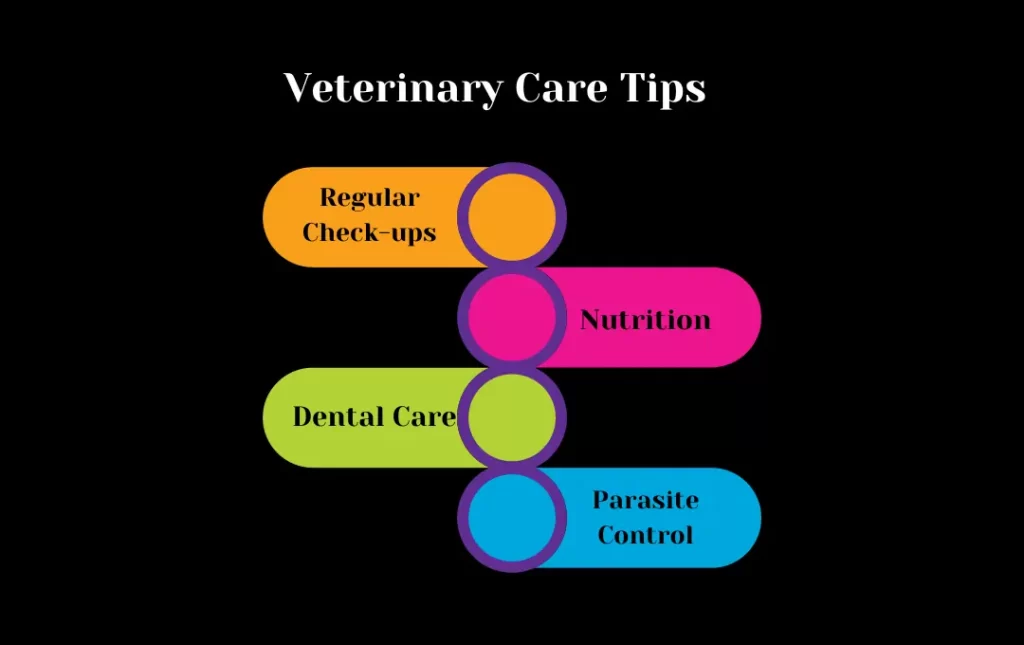
Ongoing veterinary care is a crucial aspect of responsible pet ownership. Bengal Tabby cats, like all cats, require routine healthcare to ensure they lead healthy and happy lives. Here are some veterinary-related costs to consider:
- Vaccinations: Bengal Tabby kittens need a series of vaccinations to protect them from common diseases. These vaccinations typically include core vaccines like those for feline panleukopenia, calicivirus, and rhinotracheitis, as well as any additional vaccines recommended by your veterinarian based on your cat’s lifestyle.
- Annual Check-ups: Regular annual check-ups with a veterinarian are essential to monitor your Bengal Tabby’s overall health. During these visits, your vet can catch and address any potential health issues early.
- Spaying/Neutering: Unless you plan to breed your Bengal Tabby, spaying (for females) or neutering (for males) is recommended. This procedure not only helps control the pet population but can also have health and behavioral benefits. Costs for spaying/neutering vary by location and veterinary clinic.
- Preventative Medications: Flea and tick preventatives, as well as heartworm prevention (especially if you live in an area with a high prevalence of heartworm disease), should be part of your cat’s routine healthcare. These products have ongoing costs.
- Emergency Vet Care: It’s important to budget for unexpected veterinary emergencies, as accidents and illnesses can happen at any time. Having savings set aside for unexpected medical expenses is advisable.
Nutrition
Proper nutrition is vital for your Bengal Tabby’s health and well-being. Quality cat food, whether commercial or homemade, is an ongoing expense. Here are some considerations:
- High-Quality Cat Food: Bengal Tabby cats thrive on high-quality cat food that meets their nutritional needs. Premium cat food brands may cost more but can contribute to better long-term health.
- Feeding Schedule: Be mindful of portion sizes and feeding schedules to prevent overeating and obesity. Discuss your cat’s dietary needs with your veterinarian to establish a healthy feeding routine.
Grooming
Bengal Tabby cats have short, low-maintenance coats, but grooming is still necessary to keep them in top condition. Here’s what to consider:
- Brushing: Regular brushing helps remove loose fur, prevent matting, and reduce shedding. Invest in a quality cat brush to keep your Bengal Tabby’s coat healthy.
- Nail Trimming: Routine nail trimming is essential to prevent overgrown claws, which can be uncomfortable for your cat and potentially damage furniture or cause injury.
- Bathing: While Bengal Tabby cats generally don’t require frequent baths, occasional baths may be necessary, especially if your cat gets into something dirty or has skin issues.
Understanding the costs and responsibilities associated with Bengal Tabby cat ownership beyond the initial purchase price is essential for providing your feline companion with the care and attention they deserve. By budgeting for these ongoing expenses and staying committed to your cat’s health and well-being, you can ensure a long and fulfilling life for your Bengal Tabby. In the next chapter, we’ll explore the pros and cons of adopting versus buying a Bengal Tabby cat, helping you make an informed decision about how to bring one of these extraordinary cats into your life.
Adopting vs. Buying a Bengal Tabby Cat – The Pros and Cons of Each Option
When considering adding a Bengal Tabby cat to your family, you have two primary options: adopting from a shelter or rescue organization or buying from a breeder. Each option has its own set of advantages and disadvantages. In this chapter, we’ll explore the pros and cons of adopting and buying a Bengal Tabby cat to help you make an informed decision.
Adopting a Bengal Tabby Cat:
Pros
Saving a Life: One of the most significant advantages of adopting a Bengal Tabby cat from a shelter is that you are providing a loving home to a cat in need. You’re giving a second chance to a cat that may have faced difficult circumstances.
Lower Cost: Adoption fees are typically lower than the purchase price from a breeder. This can be a cost-effective way to welcome a Bengal Tabby into your home.
Mature Cats Available: Shelters often have adult cats available for adoption. If you prefer an older cat that has already outgrown kitten behavior, adoption is a great option.
Mixed Breeds: While purebred Bengal Tabby cats are less common in shelters, you may find Bengal mixes with similar traits and personalities.
Cons
Limited Availability: Bengal Tabby cats in shelters can be relatively rare. If you have your heart set on a purebred Bengal Tabby, you may have a harder time finding one through adoption.
Unknown History: Cats in shelters may have unknown or uncertain medical and behavioral histories. You may need to invest time and effort into addressing any pre-existing issues.
Buying a Bengal Tabby Cat from a Breeder
Pros:
Predictable Traits: Buying from a reputable breeder gives you access to cats with predictable traits, such as coat patterns, coloration, and temperament, as breeders carefully select for these characteristics.
Health Guarantees: Reputable breeders often provide health guarantees, ensuring that your Bengal Tabby cat is free from common genetic diseases.
Pedigree: Bengal Tabby cats from breeders typically come with documented pedigrees, allowing you to trace their lineage and genetic history.
Breeder Support: Responsible breeders are valuable sources of information and support, offering guidance on care, nutrition, and behavior.
Cons
Higher Cost: Bengal Tabby cats from breeders are generally more expensive than adoption fees from shelters. The initial purchase price can be a significant investment.
Potential for Overbreeding: Some breeders may prioritize profit over the well-being of their cats, leading to unethical breeding practices.
Responsibility: Owning a purebred Bengal Tabby cat comes with the responsibility of preserving their breed traits and potential for participation in cat shows if you choose to do so.
In summary, both adoption and buying from a breeder have their merits and drawbacks. Your choice will depend on your personal preferences, budget, and what you are looking for in a Bengal Tabby cat. Regardless of your decision, the most important factor is to ensure that your cat comes from a responsible and ethical source that prioritizes the health and well-being of the feline companion you’ll be sharing your life with. In the following chapter, we’ll debunk common myths about Bengal Tabby cat prices to help you make an informed choice.
Bengal Tabby Cat Price Myths – Dispelling Common Misconceptions
When it comes to the price of Bengal Tabby cats, there are several myths and misconceptions that can mislead potential buyers. In this chapter, we’ll debunk some of the most common Bengal Tabby cat price myths to provide you with a clearer understanding of the factors that influence their cost.
Myth 1: Bengal Tabby Cats Are Always Expensive
Reality: While Bengal Tabby cats can be relatively expensive, their price can vary widely. Factors such as age, quality, pedigree, and breeder reputation all play a role in determining the price. It is possible to find Bengal Tabby cats at a range of price points, including more affordable options.
Myth 2: All Bengal Tabby Cats Have the Same Price
Reality: Bengal Tabby cat prices are not one-size-fits-all. Cats with different coat patterns, colors, and pedigrees can have significantly different prices. Show-quality cats with exceptional traits may cost more than pet-quality cats with less distinct features.
Myth 3: Higher Price Equals Better Quality
Reality: While higher-priced Bengal Tabby cats may come from reputable breeders and have specific traits or pedigrees, it doesn’t guarantee that they are the best choice for every buyer. The right Bengal Tabby cat for you depends on your preferences and what you’re looking for in a feline companion.
Myth 4: All Bengal Tabby Cats from Breeders Are Healthy
Reality: While responsible breeders prioritize the health of their cats, no breeder can guarantee 100% perfect health. Genetic conditions can still occur. It’s essential to choose a breeder who conducts health testing and provides health guarantees to mitigate potential risks.
Myth 5: Shelter Cats Are Low-Quality
Reality: Shelter Bengal Tabby cats can be loving, healthy, and wonderful companions. Many of them are given up for reasons unrelated to their quality as pets. Adopting a shelter gives you the chance to provide a loving home to a cat in need.
Myth 6: Buying a Bengal Tabby Cat Is Always Better Than Adopting
Reality: The decision to buy or adopt a Bengal Tabby cat depends on your personal preferences and circumstances. Both options have their advantages and disadvantages, and what matters most is ensuring the well-being of your future feline companion.
Myth 7: Price Is the Only Indicator of Quality
Reality: While price can be an indicator of quality, it’s not the sole factor to consider when choosing a Bengal Tabby cat. The reputation of the breeder, the cat’s health and temperament, and your compatibility with the cat are equally important considerations.
Tips for Negotiating Bengal Tabby Cat Prices and Questions to Ask a Breeder
When negotiating Bengal Tabby cat prices with a breeder, it’s essential to be well-informed and prepared. Here are some tips for successful negotiations and questions to ask a breeder to ensure you’re making an informed decision:
Tips for Negotiating Bengal Tabby Cat Prices
Research Breed Standards: Familiarize yourself with Bengal Tabby breed standards and what constitutes a high-quality Bengal cat. This knowledge will help you understand the value of the cat you’re interested in.
Set a Budget: Determine your budget in advance and be clear about how much you’re willing to spend. This will help you avoid overspending and ensure you find a cat within your price range.
Ask About Pricing Factors: Inquire about the specific factors that influence the cat’s price, such as coat pattern, coloration, pedigree, and show potential. Understanding these factors will help you assess whether the price aligns with the cat’s quality.
Discuss Health Guarantees: Ask about health guarantees provided by the breeder. Reputable breeders often offer guarantees against genetic health issues for a specified period after purchase. Ensure you understand the terms and conditions of any health guarantee.
Consider Additional Costs: Factor in the cost of spaying/neutering, vaccinations, microchipping, and any other services or inclusions provided by the breeder. Clarify what is included in the purchase price.
Ask About Payment Plans: Some breeders may offer payment plans or financing options to help you manage the cost. Inquire about these possibilities if needed.
Negotiate Respectfully: Approach negotiations with respect and professionalism. Keep in mind that breeders invest significant time, effort, and resources into their cats, so be mindful of their perspective.
Bengal Tabby Cat Price Trends
As of my last knowledge update in September 2021, Bengal Tabby cat prices were influenced by several factors, including the cat’s quality, pedigree, coat pattern, and breeder reputation. Prices for Bengal Tabby cats could vary widely, with some cats being more affordable as pets and others commanding higher prices, especially if they were of show or breeding quality or had rare coat patterns.
However, I do not have access to real-time data, and pricing trends for Bengal Tabby cats can change over time due to factors such as supply and demand, changes in breeder practices, and shifts in the popularity of the breed. Prices for specific breeds can also be influenced by regional factors and economic conditions.
Bengal Tabby Cat Price Comparison
The price of a Bengal Tabby cat can vary significantly based on factors such as quality, pedigree, coat pattern, and breeder reputation. Bengal Tabby cats are generally considered one of the more expensive domestic cat breeds due to their unique appearance, which resembles that of their wild ancestors, the Asian leopard cat.
Here’s a general price comparison of Bengal Tabby cats with some other popular cat breeds:
Persian Cat: Persian cats are known for their luxurious long coats and sweet personalities. Prices for Persian kittens can range from $500 to $5,000, with show-quality Persians on the higher end of the price spectrum.
Siamese Cat: Siamese cats are known for their striking blue almond-shaped eyes and short coats. Siamese kittens typically cost between $400 to $1,200, depending on factors like quality and breeder reputation.
Maine Coon Cat: Maine Coon cats are one of the largest domestic cat breeds known for their friendly and gentle nature. Prices for Maine Coon kittens generally range from $800 to $2,500, with show-quality Maine Coons on the higher side.
Sphynx Cat: Sphynx cats are unique for their hairless appearance. Due to their rarity and specialized care requirements, Sphynx kittens can range from $1,500 to $4,000 or more.
Ragdoll Cat: Ragdoll cats are known for their docile and affectionate temperament. Prices for Ragdoll kittens typically range from $800 to $2,500, depending on factors like pedigree and breeder reputation.
Bengal Tabby Cat: Bengal Tabby cats are known for their wild appearance and distinct coat patterns. Prices for Bengal Tabby kittens can vary widely, from $800 to $6,000 or more, depending on factors like coat quality, pattern, and breeder reputation. Rare patterns, such as rosettes or clouded markings, often command higher prices.
Caring for Your Bengal Tabby Cat – Providing a Loving and Enriching Environment
Congratulations on bringing a Bengal Tabby cat into your life! These unique and lively felines require a loving and enriching environment to thrive. In this chapter, we’ll explore how to care for your Bengal Tabby cat and provide them with the best possible life.
Nutrition
a. High-Quality Cat Food: Choose a high-quality commercial cat food that meets your Bengal Tabby’s nutritional needs. Consult your veterinarian for specific dietary recommendations based on your cat’s age, activity level, and any health concerns.
b. Fresh Water: Ensure your cat has access to fresh, clean water at all times. Cats should stay well-hydrated for their overall health.
c. Portion Control: Avoid overfeeding by following portion guidelines. Obesity can lead to health issues, so consult your vet for portion recommendations.
2. Enrichment and Play
a. Toys: Bengal Tabby cats are active and playful. Provide a variety of toys, including interactive toys, feather wands, puzzle feeders, and laser pointers to keep them mentally and physically stimulated.
b. Scratching Posts: Bengals enjoy scratching to maintain their claws and stretch. Invest in sturdy scratching posts or pads to prevent them from scratching furniture.
c. Playtime: Dedicate daily playtime with your Bengal Tabby to engage their hunting instincts and bond with them.

d. Vertical Space: Bengals love to climb. Install cat trees or shelves to give them opportunities to explore vertical spaces.
Socialization
a. Interaction: Spend time with your Bengal Tabby, engaging in petting, cuddling, and talking to them. They are known for their affectionate nature.
b. Social Cats: Bengal Tabby cats are social animals and often enjoy the company of other cats or even dogs if introduced properly.
Litter Box and Hygiene
a. Cleanliness: Keep the litter box clean and scoop it daily. Bengals can be picky about their litter box hygiene.
b. Grooming: While Bengal Tabby cats have short coats, regular grooming is still necessary to remove loose fur and prevent matting.
Veterinary Care
a. Routine Check-ups: Schedule regular check-ups with your veterinarian to monitor your cat’s health. Discuss vaccinations, parasite control, and dental care.
b. Dental Health: Dental hygiene is important. Brush your cat’s teeth regularly or provide dental treats or toys to promote oral health.
6. Safety:
a. Secure Windows: Ensure that windows and balconies are secure to prevent accidents or escapes. Bengals are known for their curiosity.
b. Toxic Substances: Keep toxic plants, chemicals, and small objects out of reach to protect your Bengal Tabby from harm.
Mental Stimulation
a. Puzzle Toys: Use puzzle toys to challenge your cat’s intellect and keep them mentally stimulated.
b. Training: Bengals are intelligent and can be trained to perform tricks or use a litter box. Positive reinforcement training can strengthen your bond and provide mental exercise.
Love and Affection
a. Quality Time: Spend quality time with your Bengal Tabby, offering love and attention. They are known for their strong bonds with their owners.
b. Patience: Be patient with your cat, especially during transitions or when introducing them to new experiences or people.
By providing a loving, enriching environment and attending to your Bengal Tabby’s physical and emotional needs, you can ensure they lead a happy and fulfilling life as a cherished member of your family.
frequently asked question
Conclusion
In this comprehensive guide, we’ve explored the world of Bengal Tabby cats, including their unique characteristics, history, coat patterns, and pricing factors. We’ve also delved into how to find reputable breeders, the costs associated with Bengal Tabby cat ownership, and the decision-making process of adopting vs. buying.
Bengal Tabby cats are captivating and sought-after feline companions, known for their distinctive appearance and spirited personalities. However, their prices can vary widely based on factors such as quality, pedigree, coat pattern, breeder reputation, and geographical location.


